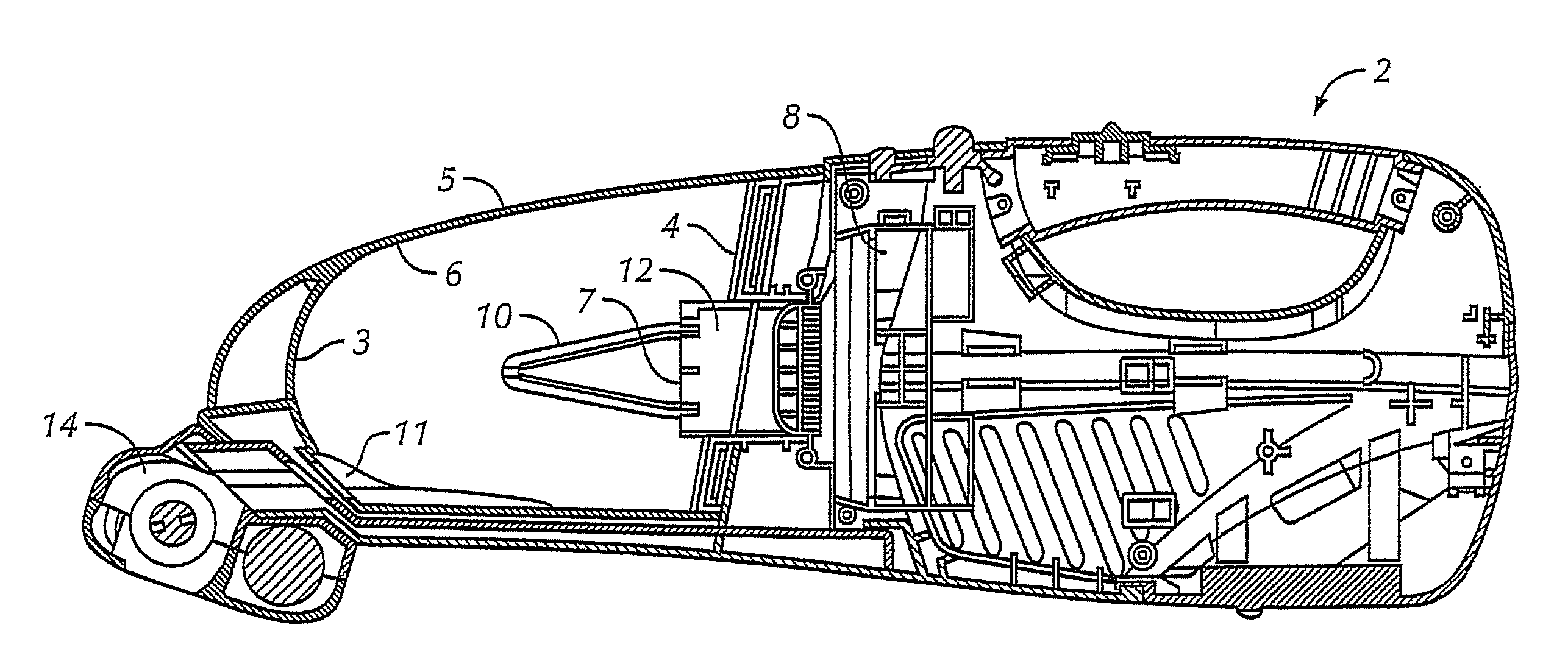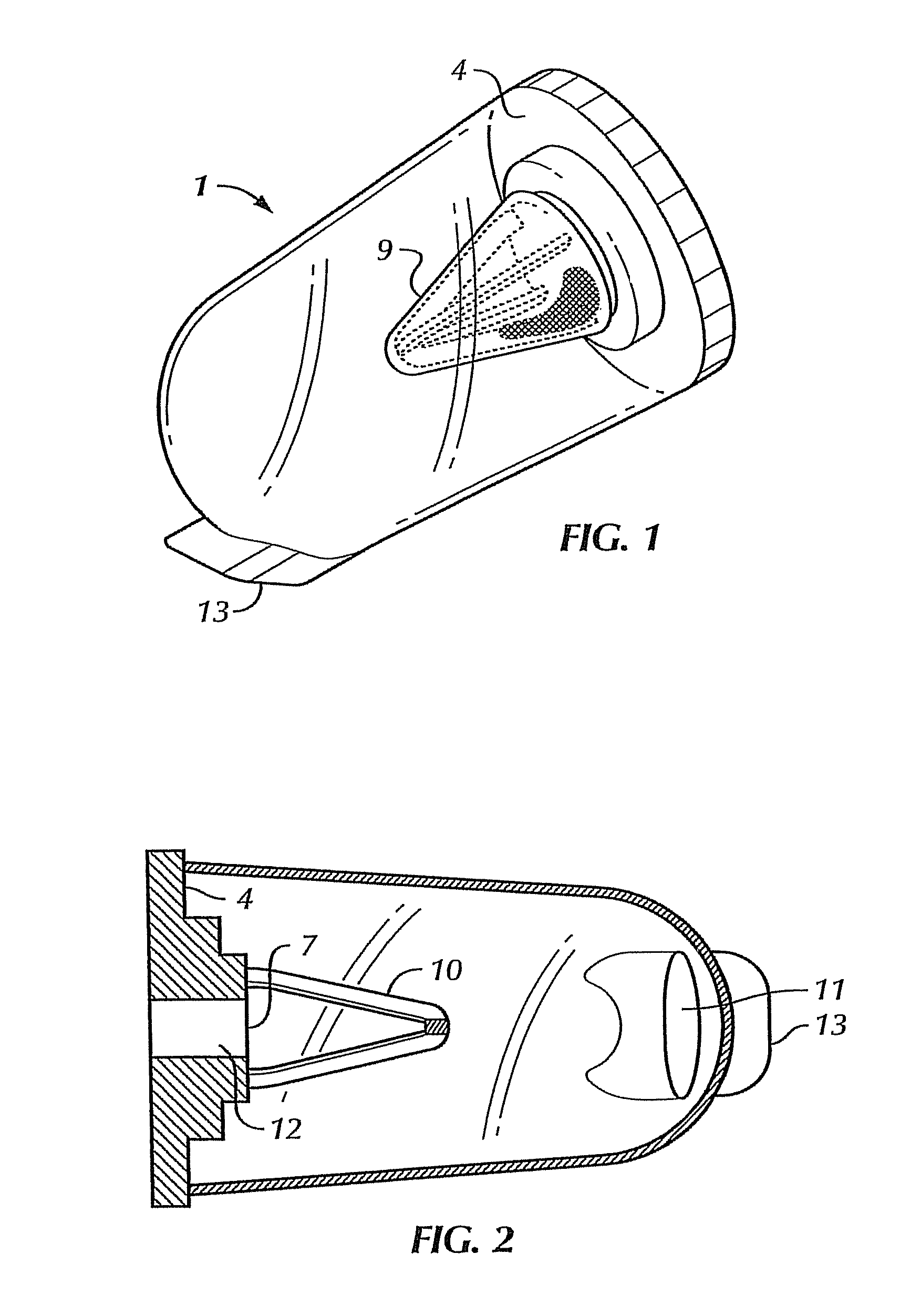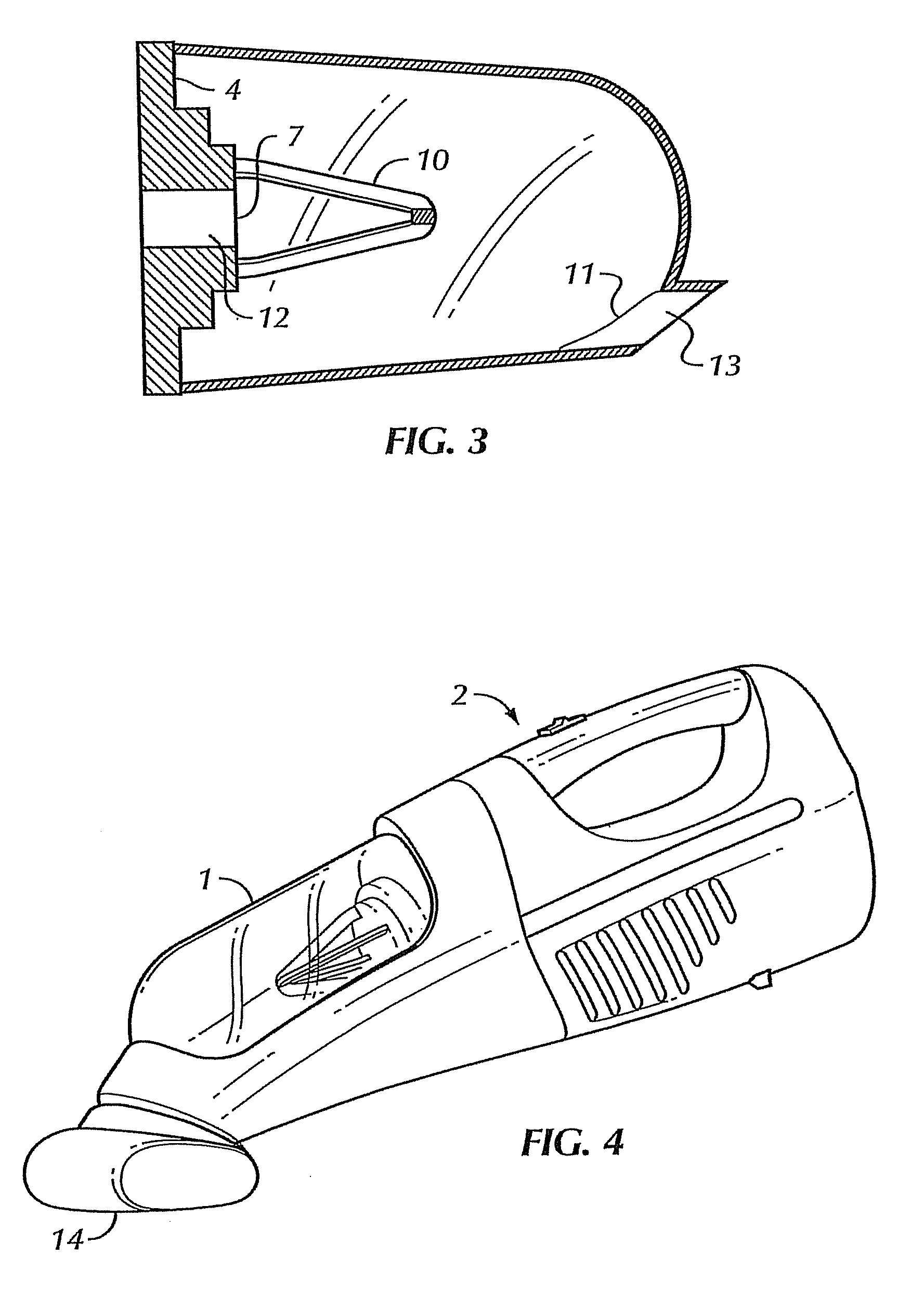Cyclonic chamber for air filtration devices
a technology of air filtration device and cyclonic chamber, which is applied in the field of vacuums, can solve the problems of affecting the vacuum strength, affecting the life of the conventional vacuum, and reducing the overall strength of the vacuum
- Summary
- Abstract
- Description
- Claims
- Application Information
AI Technical Summary
Benefits of technology
Problems solved by technology
Method used
Image
Examples
Embodiment Construction
[0035]The invention comprises a cyclonic chamber 1 for a vacuum 2. A first preferred embodiment of chamber 1 will be discussed, followed by a second preferred construction. In a first preferred construction, cyclonic chamber 1 has an apex 3 opposite a base 4 and walls 5 extending therebetween. Cyclonic chamber 1 is either generally parabolic in cross section or generally tubular with a hemi-spherical cap at the apex end. The interior surface 6 of walls 5 and apex 3 are substantially smooth and free of obstructions. Extending inwardly from base 4 is an outflow passage 12, which terminates in an outflow aperture 7 that allows air to exit cyclonic chamber 1. Outflow passage 12 will preferably separate outflow aperture 7 from base 4. In the preferred embodiment, outflow aperture 7 will lead to a fan 8 which will generate suction for vacuum 2. Positioned over outflow passage 12 and outflow aperture 7 and extending into cyclonic chamber 1 is a filter 9. Filter 9 will preferably be conical...
PUM
| Property | Measurement | Unit |
|---|---|---|
| curvature | aaaaa | aaaaa |
| angle | aaaaa | aaaaa |
| shape | aaaaa | aaaaa |
Abstract
Description
Claims
Application Information
 Login to View More
Login to View More - R&D
- Intellectual Property
- Life Sciences
- Materials
- Tech Scout
- Unparalleled Data Quality
- Higher Quality Content
- 60% Fewer Hallucinations
Browse by: Latest US Patents, China's latest patents, Technical Efficacy Thesaurus, Application Domain, Technology Topic, Popular Technical Reports.
© 2025 PatSnap. All rights reserved.Legal|Privacy policy|Modern Slavery Act Transparency Statement|Sitemap|About US| Contact US: help@patsnap.com



